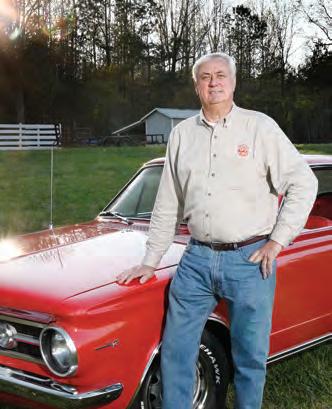
21 minute read
More Power
from 2023-02-CEMC
Wake Electric’s Privette Posthumously Awarded Order of the Longleaf Pine
Late director’s family received the award on his behalf
On Dec. 8, former Wake Electric Director Rodney Privette was posthumously awarded the Order of the Long Leaf Pine. Since 1963, North Carolina’s governors have reserved the award as the highest honor for persons who have made significant contributions to the state and their communities through exemplary service and exceptional accomplishments.
Privette passed away unexpectedly in August. He had served on the Wake Electric Board of Directors since March 2016. The award was presented to Privette’s family by NC Senator Sarah Crawford and NC Representative Terence Everitt. Donnie Lawrence, current chief of the Rolesville Rural Fire Department, coordinated the presentation, which coincided with the annual meeting for the fire department.
“Rodney’s impact on our community is an inspiring example of leadership to everyone who knows him,” said Wake Electric Board President Suzy Morgan. “As a Rolesville native, Rodney’s community ties ran deep, and Wake Electric celebrates the mark he left on the cooperative as well as public safety and economic development in our area.”
In addition to serving on the Wake Electric Board of Directors, Privette had served as chief of the Rolesville Rural Fire Department since 1992 where he had begun as a volunteer firefighter in 1975. He also served on the Wake County Fire Commission, helped form the Rolesville Chamber of Commerce, served on the board of the Wake Forest Federal Savings & Loan and co-owned Privette Insurance Agency with his sister. He was also a devoted, lifelong member of the Rolesville Baptist Church.
“Rodney filled so many roles in service to his hometown,” said NC Senator Sarah Crawford, as quoted by The Wake Weekly. “And what I knew of Rodney from such a short time, and what I’ve learned since, is that he taught every single one of us what it means to live a life of devotion to others.”
“This prestigious award is a fitting way to recognize and honor Rodney’s legacy and impact on his community and our great state,” Morgan added. “We are proud to see one of our own being honored among North Carolina’s notables.”
(L to R) Privette’s family receiving the award were fiancée Susan Cashion; daughter Brandi Privette and her fiancé Kevin; Niki Privette and grandsons Carson, Hunter and Andrew, and son Coy Privette. NC Sen. Crawford and NC Rep. Everitt presented the award.
In his spare time, Privette would restore old cars, including a 1965 Plymouth Barracuda that was once owned by a U.S. Army soldier who died in Vietnam (“The Compassionate Collector,” May 2020, page 14).


Students: Apply Now for Basketball Camp!
Rising sixth and seventh graders can now apply for a Touchstone Energy Sports Camp Scholarship to attend basketball camp in June. Wolfpack Women’s Basketball Camp NC State University Raleigh Carolina Basketball School The University of North Carolina Chapel Hill
Powering A Brighter Future
North Carolina’s Electric Cooperatives are enhancing reliability and advancing our service to consumer-members with cutting-edge technology as part of our Brighter Future vision.




Learn about our 5 microgrids, 10 battery energy storage systems, 13 solar + storage sites and more.
rural A fresh start for healthcare
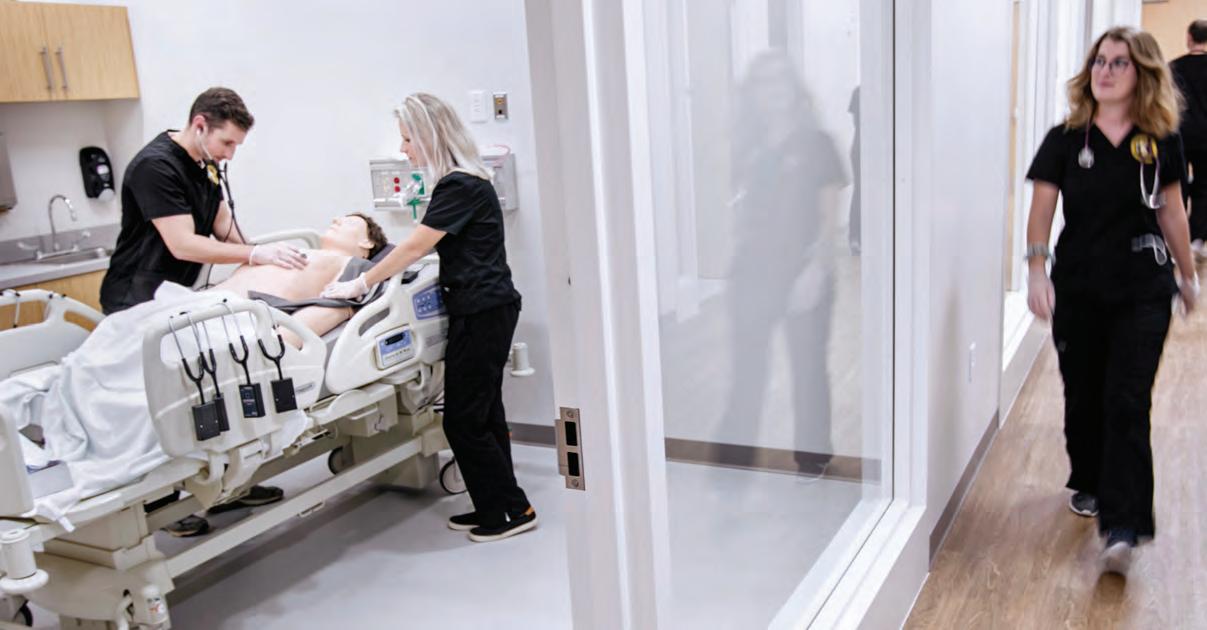
Training the next generation of rural doctors
By Sarah Thompson
Before Cannon Memorial Hospital’s labor and delivery unit closed in 2015, Dr. Benjamin Gilmer delivered one of the last babies to be born in an Avery County hospital. The unit where his cousins were born is gone because it was no longer seen as cost-effective to provide obstetrical care in the county, Dr. Gilmer explains.
“We have had more labor and delivery closures per capita than any other region in the country,” Dr. Gilmer says. “This is bad for communities, bad for the economy and certainly bad for women who would like to deliver their child in their home communities.”
Dr. Gilmer is the medical director of the Rural Health Initiative and Rural Fellowship at the Mountain Area Health Education Center (MAHEC), the largest of nine area health education centers in the state, which address the supply, retention and quality of health professionals, particularly in rural communities. Before joining MAHEC, he lived and worked as a doctor in rural North Carolina. He believes that inspiring the next generation of doctors is the best way to help rural places not only survive, but attain health literacy and gain access to specialized doctors educated on social justice in health advocacy.
Counties in need The North Carolina Institute of Medicine describes primary care providers as “the entry point into the health care system.” Access to their care is associated with fewer health disparities and better health among various socioeconomic statuses. The target primary care provider to population ratio should be equal to roughly 6.6 providers per 10,000 patients, according to the Institute. This ratio symbolizes how access to providers improves overall health of communities and can prevent a diagnosis or injury from becoming a NC Primary Care Physicians 2021, by county Greater than recommended minimum of 6.67 per 10,000 patients Below the recommended minimum critical health issue. Yet many rural counties in North Carolina fall far short of this ratio (see map). The gap between access to health providers in rural versus urban counties is not just an inconvenience, it’s causing serious health disparities that doctors like Benjamin Gilmer want students to understand — and want to change.

Rural training Dr. Crystal Gaddy worked in rural healthcare systems for more than 18 years. She has witnessed its shortfalls firsthand. Today, she is an associate professor at Pfeiffer

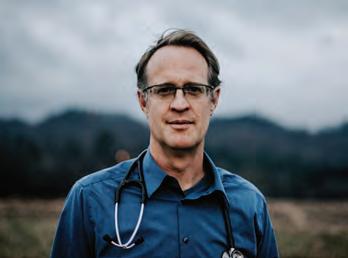
University’s Master of Science in Occupational Therapy program in Stanly County, where she and other faculty echo the significant need for students to practice medicine in rural areas.
“We’re able to, along with other faculty, really teach and educate our students with the hopes that they will, at least initially or at sometime within their careers, serve those who are really underserved,” Dr. Gaddy says. “From the moment the students enter Pfeiffer’s Occupational Therapy Program, that is the main focus.”
Pfeiffer University’s graduate program in Occupational Therapy (OT) began about two years ago alongside their Physician Assistant (PA) Studies program. As their brandnew building started construction and faculty got together to discuss curriculums, rural health was always a part of the conversation. The most pressing issue discussed was the shortage of health providers in rural regions.
Assistant Professor of Physician Assistant Studies and Randolph EMC member Dale Patterson says that it is extremely difficult to keep providers in rural places. When he’s not at the university, Dale continues to provide clinical care once a week in his local county, Montgomery. At Pfeiffer, students learn about the need for their skills in rural areas, but also the unique opportunities that practicing and living in a rural community can bring.
“The more rural you get, the more difficult it is to retain providers over time,” Dale says. “It can be burdensome on someone over a long period of time if you’re the only provider in office.”
Students discover this for themselves during their required fieldwork. Both the OT and PA programs place students across the country, and the world, to work with health providers and experience what it means to serve and be a part of a community. Dr. Gaddy believes that rural fieldwork is where students get the chance to show off their creativity and critical thinking.
“The best place to be creative is within rural healthcare,” Dr. Gaddy says. “When you have access to everything in the world, you don’t have to critically think as hard. With our students — with us trying to push them within those fieldwork areas and those opportunities in places we call ‘emerging areas’ — it shows them that anything is possible.”
Universities and rural health organizations try to motivate students to practice in rural areas through scholarships, loan forgiveness and other incentives. When Dale was in school, he received a National Health Service Corps scholarship and advises his students to take advantage of those opportunities, which give them more financial freedom to serve communities in need.
Desiring the work Back in Western North Carolina, Dr. Gilmer works 60 to 80 hours a week trying to recruit the newest generation of doctors to practice in rural places. Over the past five years, they’ve placed approximately 30 doctors in western regions of the state. The Rural Health Initiative (RHI) has become the largest recruiter of the health professionals in the mountains and are busy looking to place more psychiatrists, general surgeons and obstetricians.
“Our ultimate goal is for every member of every rural community to have access to a primary care provider,” Dr. Gilmer says. “We want our students and doctors to desire work in rural areas.”
Like Pfeiffer, Dr. Gilmer advises students to look for avenues of support that can ease their transition into rural health systems. He explains the three pillars of support that RHI utilizes to attract and retain health professionals in western North Carolina. First, they talk with high school students to inspire them to give back to their community by becoming a rural care provider. Second, they recruit, train and support students through their schooling by providing scholarships, special training for rural care and connecting them with communities early on. Third, they support practices so that they feel well-capacitated and that they’re a part of a much larger mission.
Hope for the future The work is exhausting yet rewarding. Doctors and local citizens are dedicating their lives to advocate and save lives in rural communities because they know everyone deserves the best care, no matter where they live. These advocates of rural healthcare find solace in those they work with and in the changes they’re seeing in the eyes of their students, patients and communities.
“Everybody wants to give rural communities the health services they need. It’s apolitical,” Dr. Gilmer says. “It’s more than medicine, and we’re just trying to do our part.”
Dr. Benjamin Gilmer
Corey Nolen
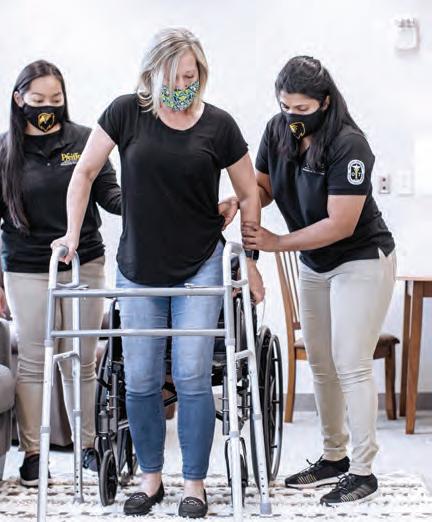
Sarah Thompson was a Carolina Country editorial intern in 2022. She is currently pursuing a journalism degree from UNC Chapel Hill.


Alan Cradick Stephen Hayes


Cameron Art Museum
Marching Toward Freedom
Stephen Hayes honors Black history through sculpture
By Vanessa Infanzon
In 2019, the Cameron Art Museum approached Durham-resident and sculptor Stephen Hayes about memorializing the United States Colored Troops (USCT) who marched through Wilmington during the Civil War Battle of Forks Road in 1865. Stephen accepted the challenge to create the memorial.
“This is a super important monument,” Stephen says, a 39-year-old Duke University assistant professor of the Practice of Art, Art History and Visual Studies. “It will tell the history of a story that is untold.”
Stephen’s creation — “Boundless,” a life-size bronze statue of 11 African American men — was unveiled in November 2021 on the grounds where the Battle of Forks Road was fought. The permanent exhibit is also the focal point at the only park in the nation built to honor the United States Colored Troops and their fight for freedom.
“They will be here until the end of time,” Stephen says of the troops. “I use my artwork to change the narrative.”
In the early stages of developing sketches for the sculpture, Stephen immersed himself in the history of the battle by walking the site and meeting the United States Colored Troops reenactors from Battery B 2nd United States Colored Light Artillery, USCT 35th Regiment Tryon Palace New Bern, and the 5th USCT Company C. While in character, these men gave Stephen a history lesson explaining what it was like to march and what kinds of clothing and shoes were worn. These soldiers didn’t have the benefit of making the trek on horses.
Each soldier’s face is based on a real person. At Stephen’s request, the museum put out a call for descendants of the soldiers and reenactors to pose for the sculpture. Stephen casted their faces, using plaster gauze to capture the details in a mold which would later be filled with plaster. The hands were cast from another group of people, veterans and additional descendants of the soldiers.
“The bodies were made from mannequins, dressed in clothing from that time period,” Stephen explains. “I made the clothes flow in the direction of the movement pattern. Then I placed the heads on top of the bodies.”
Unlike most monuments, Stephen intentionally placed “Boundless” on the ground, not on a pedestal. He wants viewers to question how this monument speaks to ones they’ve seen mounted on a tall platform.
“A lot of my work is on the ground so people can be a part of the work,” Stephen says. “These guys marched on the ground. I wanted people to be face to face with my work. I didn’t want it to be on a pedestal so people have to look up and gawk at it.”
Once the plaster mold was ready, Stephen reached out to Carolina Bronze Sculpture, Inc., in Seagrove about casting the piece in bronze. The large multifigure casting was complex, says Ed Walker, president of Carolina Bronze. He and Stephen worked closely together.
“(Stephen) is a visionary,” Ed says. “He can create pieces that have strong statements about societal changes, especially about the plight of African American people. He’s highly respected in my book in his ability to convey those types of images so that people can view and experience his sculpture, and lead with a new sensibility about important social issues.”
Vanessa Infanzon moved to Charlotte for college and never left. When she’s not writing about business or travel, she’s paddle boarding on the Catawba River.
NEWSCentral FEB. 2023

Why does your January bill seem higher?
On your December bill, you Monthly newsletter from Central Electric Membership Corp. probably noticed a wholesale power cost adjustment (WPCA) of $26.00 for every 1,000 kWh used. Actual wholesale power costs for 2022 were lower than budgeted costs, so in December each of our members received a credit on their bill to adjust for the difference. This is one of the many benefits of being a member-owner of a notfor-profit electric cooperative like Central Electric. YOU, the consumer, reap the benefits and share in the financial success of the company rather than outside shareholders. That’s the “cooperative difference,” YOU are the priority. So how does the December WPCA credit impact your January bill? In short, it doesn’t. The WPCA credit from December has no impact on your January bill. However, since your December bill was reduced by the WPCA credit, it makes the dollar difference between your December and January bill seem that much more significant. The best way to always look at your bill and to understand changes in your bill, is to look at your energy use. You’ll notice

A WPCA billing credit of $26.00 per 1,000 kWh issued to all members in December will make your January bill seem significantly higher than your December bill. Be sure to compare your energy use and factor in the WPCA billing credit you received in December. that your energy use goes up during the winter and summer months and then back down again in the spring and fall months. Your bill is largely dependent upon the fluctuations in your energy use, which is greatly impacted by the weather. So when you receive your January bill, be sure to compare energy use and factor in the WPCA billing credit you received in December. As always, if you have any questions, please don’t hesitate to give us a call at 919-774-4900.

Energy efficiency tip:
We recommend setting your thermostat to 68 degrees, or as low as you can comfortably stand it. A programmable thermostat is also a great upgrade because it allows you to customize your heating schedule to save money.
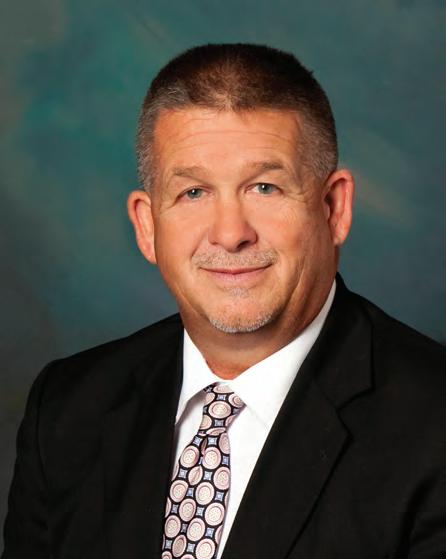
POINT OF VIEW
Resilience a top priority
From the desk of CEO & General Manager Eddie Oldham
As you are very aware by now, an unprecedented situation recently occurred in Moore County involving a concerted effort to damage Duke Energy equipment. The aftermath of the vandalism resulted in substantial damage to various substation and transmission equipment, including transmission equipment serving us here at Central as well as our sister co-op, Randolph EMC. The end result was a widespread outage across Moore County that included the greater Carthage, Cameron and Vass communities here in our area.
For those of you who live in the Carthage area, you are most likely already aware of the impact to us at the co-op due to the outage at your home that evening, but some of our other members may not be as aware. At about the same time thousands of others in Moore County began losing power, roughly 1,300 of our members in the Carthage, Cameron and Vass areas lost power as well. When the damage occurred to the Duke Energy transmission equipment, one of our Moore County substations lost its transmission feed. This resulted in an outage to our distribution feeds serving the greater Union Pines and Joel Road areas, putting our members in those areas in the dark.
Our fantastic team members responded quickly that evening to determine the issue behind the outage and came to realize that the situation was anything but normal. Thankfully, we found no damage to any of our facilities but were soon notified of the damage to Duke Energy equipment. You’ve probably heard us mention “back feeding” when communicating about work being completed on the system, and we were proactively in a position to have back feeding capabilities already set up in this area. Once we were given the “all clear” from emergency personnel, as well as from Duke Energy on the transmission load side, our crews went to work to tie in the feeds from our disabled Moore County substation to other areas of the system. Our team put together a quick and precise plan of action to back feed the impacted areas, or in less technical terms, reroute and distribute power from other areas of the system to members who were in the dark. Many years of prior work on the system focusing on resilience, reliability and redundancy, coupled with a quick response from our team members, put us in a position to restore service very quickly. Following the vandalism, you may have concerns regarding grid security and vulnerability of infrastructure. Rest assured, along with all other utilities in the industry, keeping the grid secure is a top priority for us at the co-op. Staying ahead of new challenges is a collaborative effort, and we will continue to work with other utilities, industry partners and organizations, government agencies and local officials to address concerns and reinforce vulnerabilities. As we do with all other areas of our service, we will continue to look for ways to best serve our members and community, including adding additional layers of security as necessary to ensure our substations and other critical infrastructure are secure.

Operation Round Up® boosting local groups
Thanks to the Operation Round Up program, powered by voluntary donations from Central Electric members, over $33,000 is being put back into the local communities to provide assistance for worthy projects. Grants were awarded to the following nonprofit organizations: Chatham Co. Council on Aging – $3,000 to buy tools for a sewing room at the West Chatham Senior Center in Siler City. Chatham Housing Initiatives – $3,000 to help GAP residents and other low-income families save on energy costs and preparing healthy meals. Chatham Outreach Alliance – $3,000 to help support the SNACK Program. Chatham Trades, Inc. – $3,000 to support the Adult Developmental Vocational Program (ADVP). Ingram Family YMCA – $3,000 to help provide need-based scholarships for children to attend YMCA summer camp. Johnsonville Elementary School – $3,000 to help purchase furniture for the school library. Johnsonville Elementary School (First Grade) – $481.25 to purchase materials to help first-grade students enhance their math comprehension. Outreach Mission, Inc. – $3,000 to provide basic essentials to individuals experiencing homelessness. St. Provision Community Development Corp. – $3,000 for the Fall Festival and Empowerment Weekend. Southern Lee High School – $2,965.49 to purchase necessary equipment to help students complete projects. Temple Theatre – $3,000 to help fund scholarships for the Temple Theatre youth conservatories and academy classes. West Chatham Caring Community DBA West Chatham Food Pantry – $3,000 to purchase food and other essential food items needed to serve clients.
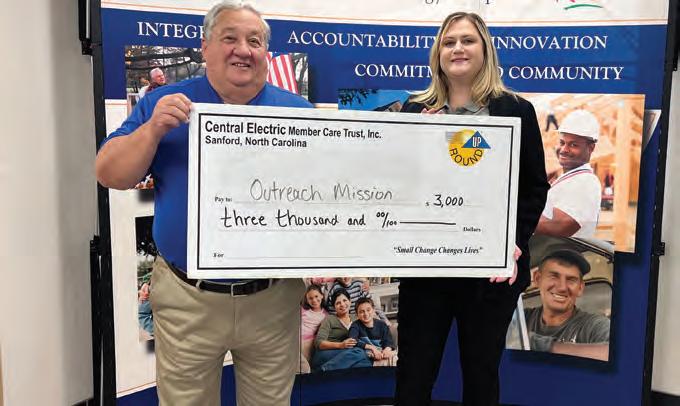
[L-R] Hamer Carter and Lillian Hatton accept a grant check for $3,000 on behalf of Outreach Mission to help reach and serve homeless individuals in our community.
Thinking about making energy-efficient upgrades to your home? We can help!
The cooperative offers a low-interest comfort loan to members with approved credit for heat pumps, insulation, storm doors and programmable thermostats. Financing can be included as a line item on your monthly electric bill. Rebates are also available for energy-efficient heat pumps, heat pump water heaters and High Efficiency Residential Option (HERO) built homes.

Scan this QR code or visit the “Savings Tools” tab at CEMCPower.com to learn more about energy-efficient loans, rebates and other tools available to our members.
TESC Basketball Scholarship Program
Central EMC annually awards two Touchstone Energy Sports Camp Scholarships to local students in Chatham, Harnett, Lee, Moore or Randolph counties. One young man is selected to attend the Carolina Basketball School at the University of North Carolina in Chapel Hill, and one young lady wins a scholarship to attend the Wolfpack Women’s Basketball Camp at NC State University in Raleigh. At camp, students work directly with the staff to learn basketball skills, leadership and teamwork. To be eligible to apply, students must be in the sixth or seventh grade during the upcoming school year, have permission from a parent or guardian to attend the overnight camp and must provide their own transportation if selected to attend. Scan the QR code or visit CEMCPower.com for more information or to apply by March 31.
Considering whether adding solar or purchasing an EV is right for you? Be sure to visit our Solar/EV section at CEMCPower.com before making any decisions. We have a lot of information available to help you decide if it is right for you and your family.

Scan this QR Code with your phone’s camera to check out our Solar/EV resources at CEMCPower.com.

128 Wilson Road P.O. Box 1107 Sanford, NC 27331
OFFICE HOURS
Monday-Friday, 8 a.m. to 5 p.m.
CONTACT
Phone: (919) 774-4900 Bill Payment: (866) 488-5011 Eddie Oldham CEO & General Manager
DIRECTORS
Rebecca G. Cogan, President Tommy Dalrymple, Vice President James B. Brooks, Secretary-Treasurer W. Phillip Thompson, Asst. Secretary Charles E. Cameron, Sr., Frank Comer III, Dr. Nancy G. Holmes, Henry Outz, Tim Priest and Henry Randolph. James Taylor, Editor This institution is an equal opportunity provider and employer.
OUTAGE REPORTING
(877) 766-6769 24-hours a day
(800) 446-7752 Text ‘PWR’ to opt-in and ‘OUT’ to report an outage
FOLLOW US
CEMCPower.com
Treasure Memories in Corolla.
With families reserving 2023 accommodations earlier than ever, there’s never been a better time to find the perfect place for your spring or summer getaway. It is nice to know that awe-inspiring remote beaches, legendary wild horses and iconic historical sites are here for you to treasure on the Corolla Outer Banks.

Find shopping, dining and entertainment with the new Corolla OBX Mobile App, on the App Store and Google Play.
Ready To Explore Corolla, NC
Land of Legendary Wild Horses
Just North of where paved roads come to an end on the Outer Banks is where the official state horse of North Carolina roam. The legendary Corolla wild horses have been calling our beaches home for over 400 years.
The Currituck Beach Lighthouse
A beacon helping guide travelers for well over a century, the Currituck Beach Lighthouse towers over the Outer Banks landscape. For a small fee, visitors can climb the winding staircase for a wide-open view of the Currituck Sound and the Atlantic Ocean.
Whalehead in Historic Corolla
In the heart of Historic Corolla Park you will find the Whalehead Museum, a restored 1920s era Art Nouveau architectural masterpiece with a storied history. Whalehead is host to several seasonal events, and offers tours Monday through Friday.
The Currituck Maritime Museum
Located just across the park from Whalehead, the new Currituck Maritime Museum tells the integral story of the history of wooden boats on the northern Outer Banks and their craftsmen through exhibits and artifacts. Open Monday through Friday.


